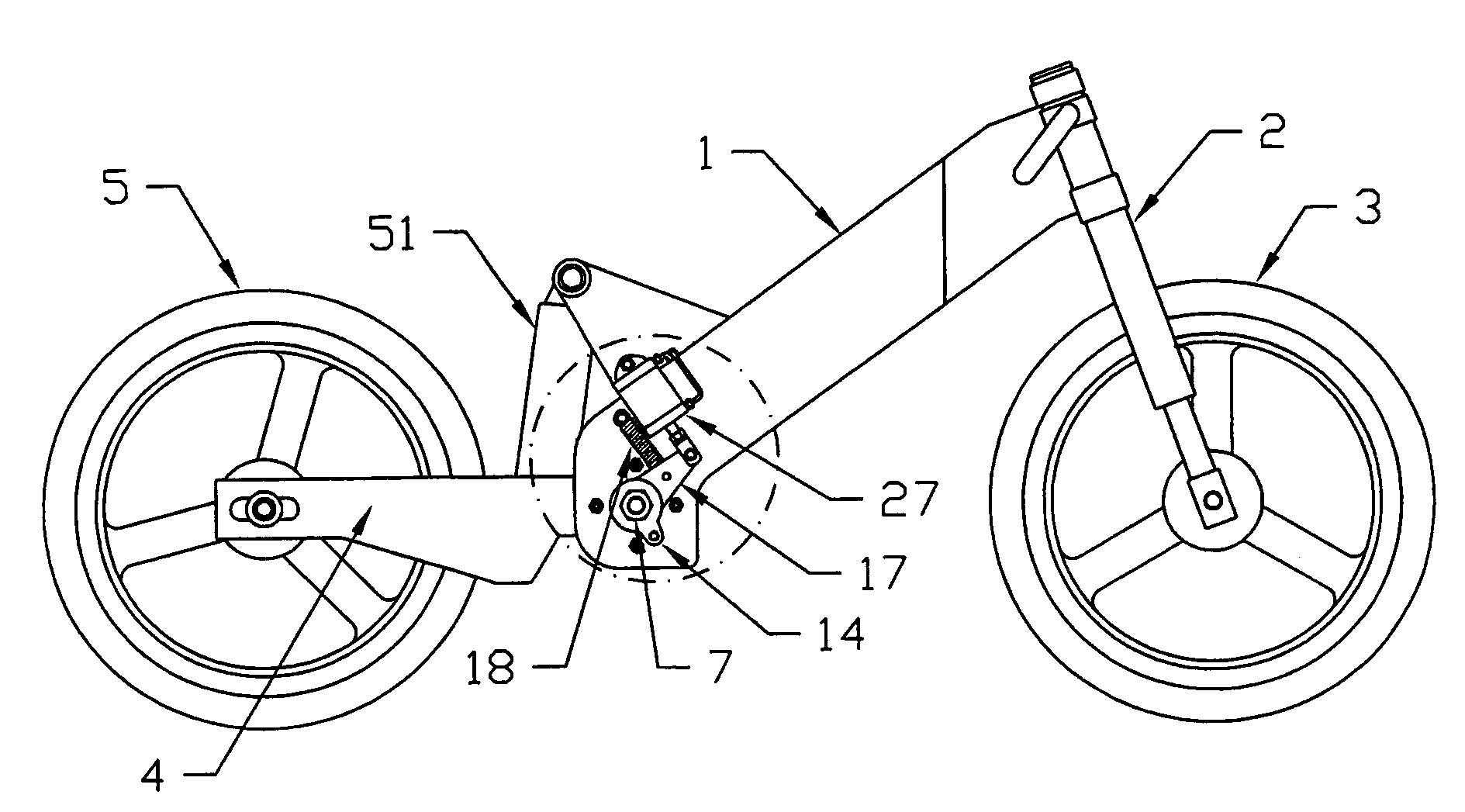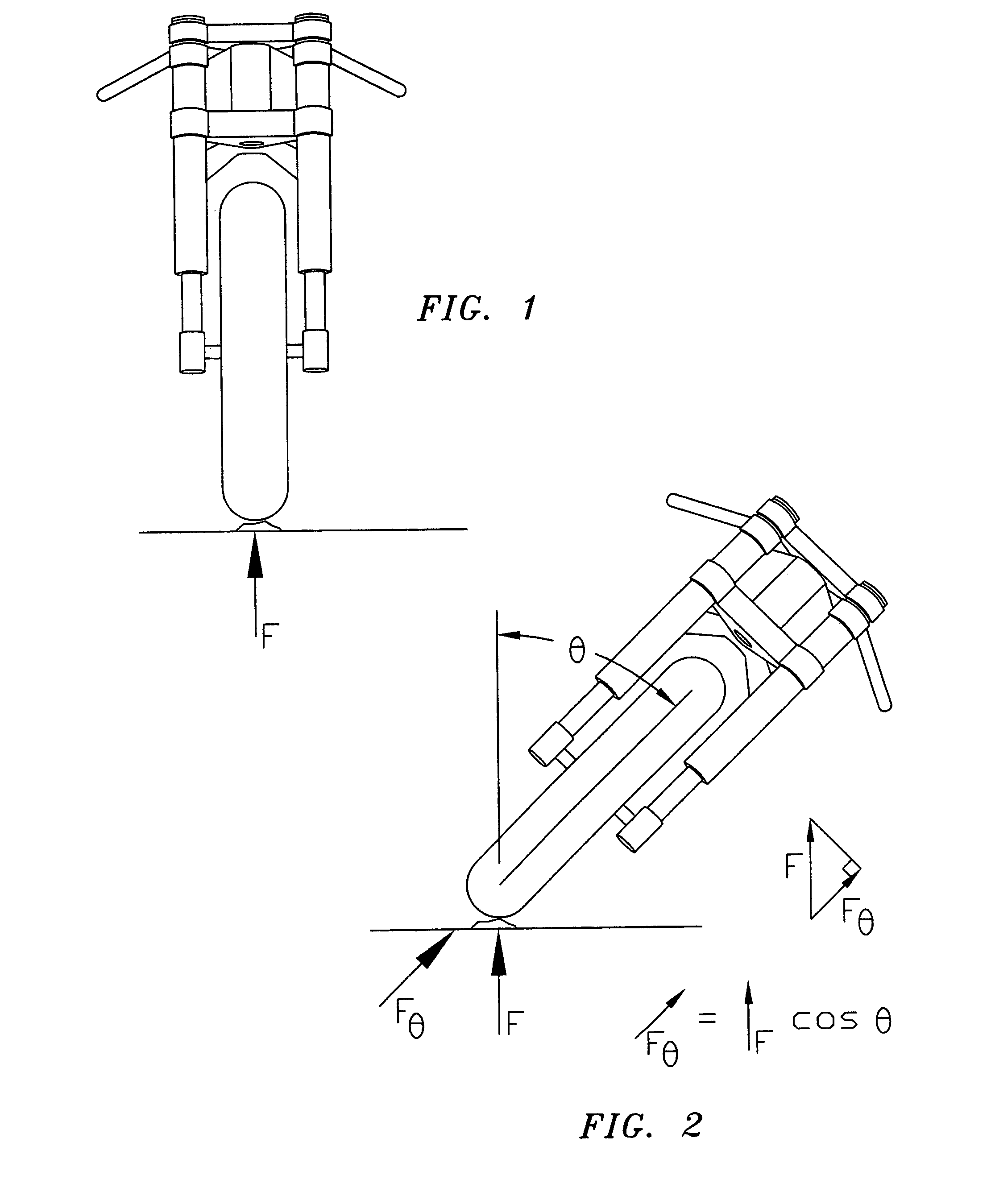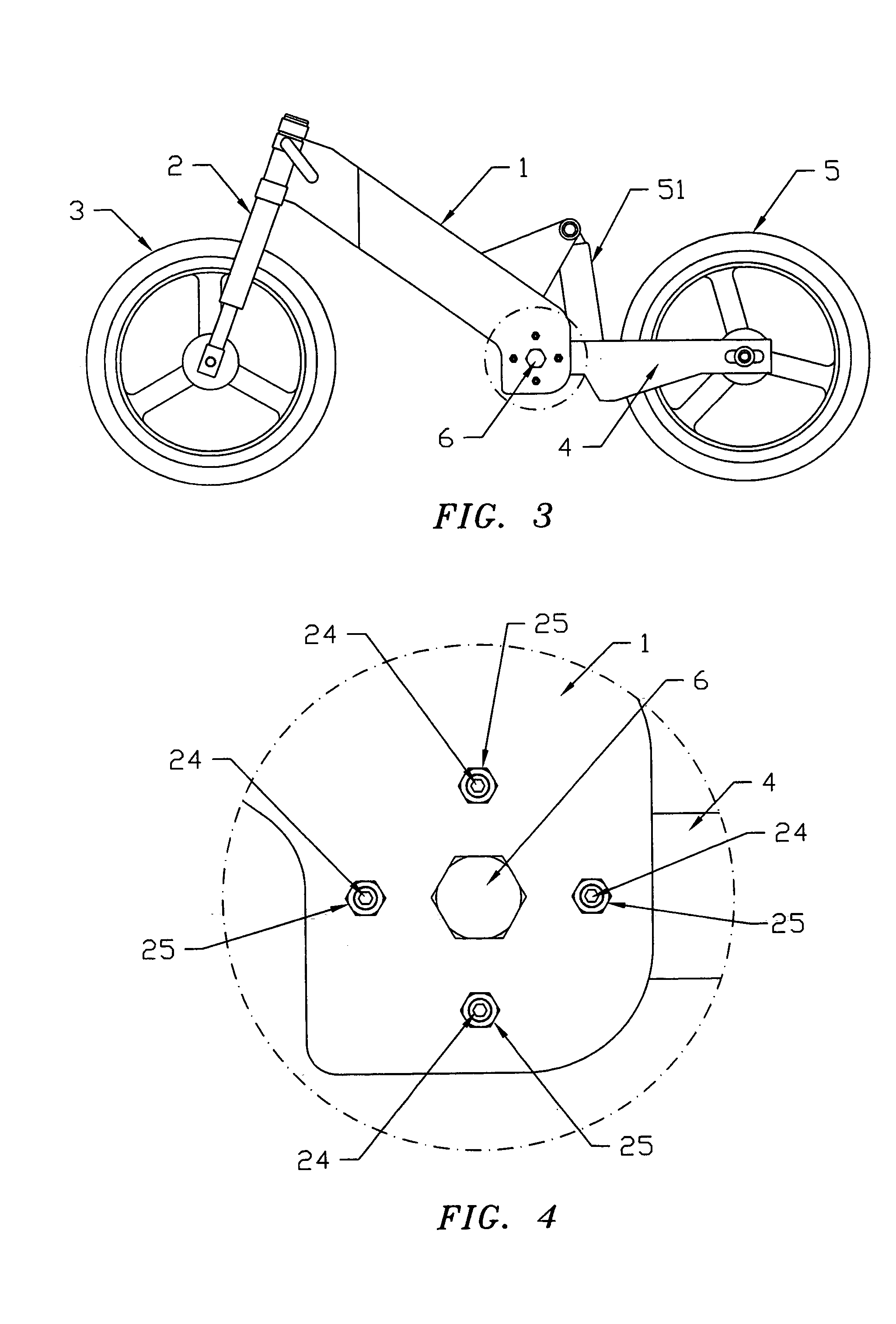Motorcycle lateral suspension mechanism
- Summary
- Abstract
- Description
- Claims
- Application Information
AI Technical Summary
Benefits of technology
Problems solved by technology
Method used
Image
Examples
first embodiment
[0095]The invention is a mechanism that is added to or built into the swingarm pivot of a motorcycle chassis. In the invention, shown in FIGS. 3 through 13, a swingarm pivot axle 6 is fitted into bushings 8 which are pressed into apertures in the motorcycle frame 1. A concentric shoulder 31 on one end of the swingarm pivot axle 6 provides a close slideable fit into one of the bushings 8. If the motorcycle frame 1 is of suitable construction and material, the swingarm pivot axle 6, optionally, is fitted into apertures in the motorcycle frame 1 without bushings 8. The shoulder 31 end of the swingarm pivot axle 6 includes a hex head, or other feature, to retain the axle 6 to the frame 1, while a self-locking nut 7 is tightened on the opposite end of the axle 6, which is threaded. When installed into the bushings 8, the hex head of the axle 6 is on one outboard side of the frame 1 and the threaded end and self-locking nut 7 is on the other outboard side of the frame 1. On the inboard si...
second embodiment
[0099]In the invention, shown in FIGS. 14 through 17, an engine case or central frame member 12 is used for additional support to the swingarm member 4 pivot. The swingarm member 4 bearing area is separated so that it straddles the engine case or central frame member 12. Each side of the swingarm member 4 includes a needle bearing 9, a collar 10, two trust bearings 11, and two end caps and seals 13. The swingarm pivot axle 6 passes through bushings 8 in the frame 1 and through a bushing 32 in the engine case or central frame member 12. A plurality of threaded flexure member mounts 24 are threaded into an array of threaded apertures in both sides of the engine case or central frame member 12, as shown in FIG. 16. Flexure members 23 are fastened to the threaded flexure member mounts 24 by locknuts 26 to each side of the case or frame member 12. The threaded flexure member mounts 24 have internal hex features, or other such features, allowing the mounts 24 to be turned to adjust the pl...
PUM
 Login to View More
Login to View More Abstract
Description
Claims
Application Information
 Login to View More
Login to View More - R&D
- Intellectual Property
- Life Sciences
- Materials
- Tech Scout
- Unparalleled Data Quality
- Higher Quality Content
- 60% Fewer Hallucinations
Browse by: Latest US Patents, China's latest patents, Technical Efficacy Thesaurus, Application Domain, Technology Topic, Popular Technical Reports.
© 2025 PatSnap. All rights reserved.Legal|Privacy policy|Modern Slavery Act Transparency Statement|Sitemap|About US| Contact US: help@patsnap.com



